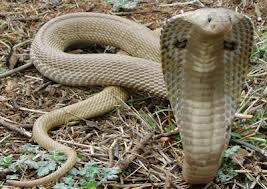M S Subbulakshmi and her music - Part 5: Dikshitar - Mahalakshmi
When it comes to singing krithis, there are predominantly two schools of thought: one that believes that kriti is one more way of expressing your manodharma and another that believes that kriti structure is sacrosanct. The artist must not tamper with the structure.
The first school of thought encourages on-the-spur sangatis, and the artist can elongate a word, condense it or glide over it based on the 'mood of the day.' We generally hear, "You will never hear this artist sing the krithi the same way twice." T N Seshagopalan may be seen as a good example of this approach.
The second school of thought believes that the structure of the kriti must be kept intact, and whenever the artist sings the krithi, the same set of sangatis are repeated the same number of times, and they don't encourage the artist to go their own path. They rather ask the artist to stick to a particular 'padantharam.' The Brinda-Mukta school, Semmangudi school and the Pattamal school are examples of this approach. In a lecdem, Rama Ravi stated, "Sing the krithi as it was taught to you. You can do manodharma in raga alapana, neraval and swara singing.' R K Sriramkumar, in a lecdem on Semmangudi, said how disciples of Semmnagudi across various age groups, who had learnt from the master at different times, essentially sang the krithi the same way.
MS Subbulakshmi belonged to the Semmangudi school of thought. When she sang the krithi, she ensured she kept the structure of the krithi intact and did not try to bring in elements of her manodharma into the krithi, consistent with her school of thought. This approach works extremely well when it comes to Dikshitar krithis. Dikshitar kritis derive their majesty and grandeur from how he slowly unfolds the raga, the Sanskrit used, and most importantly, the way he builds the edifice of the krithi. So, a taut structure becomes important when singing a Dikshitar krithi. Any on-the-spur sangathi could destroy the carefully built structure. This obsession with not disturbing the edifice is why Dikshitar krithis are more associated with artists like Brinda-Mukta, D K Pattammal and MS.
All the characteristics I mentioned above are present in this rendition of 'Mahalakshmi Karunarasa Lahari,' in the rare raga, Madhava Manohari, by MS. Observe the chosen pace. This pace allows her to showcase the composition's grandeur and depth. This, combined with the wonderful words, immediately draws you into the krithi. Also, observe how every syllable falls in place and how MS never tries to bring her own sangathis in this krithi. Given her voice and ability to do anything with the voice, making a conscious choice to stick to the structure of the krithi as taught requires great discipline. It also showcases her aesthetic sense. Her brilliant enunciation of the Sanskrit words is the icing on the cake, a bonus for us. To build this superb structure, you need great control over the pace, and MS never falters in this department. Even the madhyamakala section is brilliantly controlled.
You must also note that such renditions feel complete by themselves without the need for raga alapana as a prelude or nerval and kalpana swaras. I can't say how often I have heard this krithi in MS's voice. It's one of those renditions where you feel that had Dikshitar heard it, his heart would have been filled with joy.
Mahalakshmi Karnarasa Lahari by MS Subbulakshmi
Now, listen to Semmangudi's rendtion of the same krithi. You can clearly see how both the renditions are similar. It is highly possible that MS learnt it from Semmangudi and stuck to the structure as taught by the master.
Interestingly, the D K Pattamal version is in oru kalai and so a bit faster. It is an interesting contrast.




Comments